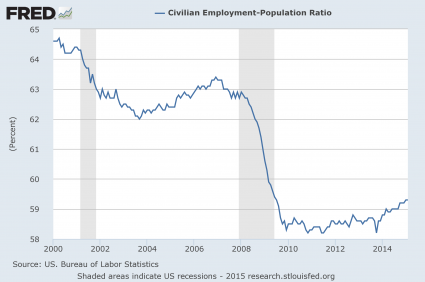 Have you noticed that the corporate media has suddenly become obsessed with rising prices over the past week or so? Day after day, mainstream news outlets are barraging us with stories about inflation, and even CNN is occasionally taking a break from bashing Republicans to cover this. Earlier today, I was directed to a CNN article entitled “Prices are rising everywhere you look”, and I decided to read it. Surprisingly, this was one CNN article that would actually pass an impartial fact check. We really are seeing very painful inflation throughout the entire economy, and this is causing many to recall the days of “stagflation” under Jimmy Carter in the 1970s.
Have you noticed that the corporate media has suddenly become obsessed with rising prices over the past week or so? Day after day, mainstream news outlets are barraging us with stories about inflation, and even CNN is occasionally taking a break from bashing Republicans to cover this. Earlier today, I was directed to a CNN article entitled “Prices are rising everywhere you look”, and I decided to read it. Surprisingly, this was one CNN article that would actually pass an impartial fact check. We really are seeing very painful inflation throughout the entire economy, and this is causing many to recall the days of “stagflation” under Jimmy Carter in the 1970s.
But the corporate media doesn’t exactly have a long track record of being straight with us.
So why are they seemingly being honest with us in this case?
Is it that this crisis has now become so obvious that nobody can deny it any longer, or is there another agenda at work?
I wish that I had an answer to that question. If you go to Google News and type “inflation” into the search bar, you will get page after page after page of recent articles about rising prices. To me, food inflation is one of the greatest concerns because it hits average American families particularly hard. And at this point, even the price of apples is rising quite dramatically…
Costs for apples are up 10% to 20% depending on the variety, said Mike Ferguson, vice president of produce and floral at Topco Associates LLC, an Elk Grove Village, Ill.-based cooperative of more than 40 food companies including grocer Wegmans Food Markets Inc. Bananas and leafy greens are more expensive too, Topco said, while vegetable oils and oil-heavy products like salad dressing and mayonnaise are also getting pricier in part because of higher ingredient prices.
“Our overall goal is to cover cost increases,” said Jon Moeller, operating chief at Procter & Gamble Co. Procter & Gamble is raising prices on baby products, adult diapers and feminine-care brands.
For a while, some food producers tried to swallow the cost increases that they were experiencing, but that could only go on for so long.
Now many of those cost increases are being passed on to consumers, and the CEO of Kellogg is admitting that he hasn’t seen this sort of inflation “in many, many years”…
Kellogg Co., maker of Frosted Flakes, Cheez-Its and Pringles, said Thursday that higher costs for ingredients, labor and shipping are pushing it and other food makers to raise prices. “We haven’t seen this type of inflation in many, many years,” Chief Executive Officer Steve Cahillane said.
But at least food prices are not going up as fast as used vehicle prices have been rising. The following comes from Wolf Richter…
This has been going on for months: Used-vehicle prices spiking from jaw-dropper to jaw-dropper, and just when I thought prices couldn’t possibly spike further, they do.
Prices of used vehicles that were sold at auctions around the US in April spiked by 8.3% from March, by 20% year-to-date, by 54% from April 2020, and by 40% from April 2019, according to the Used Vehicle Value Index released today by Manheim, the largest auto auction operator in the US and a unit of Cox Automotive.
A 54 percent increase in 12 months?
That is insane.
And the Fed still has the gall to insist that inflation has been “low”.
I have written quite a few articles about how home prices have been soaring into the stratosphere, and now rents are escalating rapidly as well.
In fact, one of the largest landlords in America just raised rents on vacant properties by 11 percent…
On Thursday, American Homes 4 Rent, which owns 54,000 houses, increased rents 11% on vacant properties in April, the company reported in a statement
All throughout the economy we see prices going up by double digits.
But Fed officials insist that these price increases are just “transitory” and are not any sort of a permanent problem.
We are also being told that all of the shortages that have emerged in the past couple of months are “temporary” too. Some of these shortages are starting to become quite painful, and that is particularly true for the global shortage of computer chips that we are currently experiencing…
In the market for a new car, smartphone or washing machine this year? A global shortage of computer chips could mean you have to wait a while — and pay more.
A growing number of manufacturers around the world are having trouble securing supplies of semiconductors, delaying the production and delivery of goods and threatening to push up the prices paid by consumers.
Just think of all the products that you own that contain computer chips.
It isn’t a short list.
As a society, we have become extremely dependent on computer chips, and CNN is admitting that this shortage “is likely to last through 2021”…
The shortage is going from bad to worse, spreading from cars to consumer electronics. With the bulk of chip production concentrated in a handful of suppliers, analysts warn that the crunch is likely to last through 2021.
This shortage is having a dramatic impact up and down various supply chains, and that is going to be the case for the foreseeable future.
At the Sogefi manufacturing facility in West Virginia, the computer chip shortage is just one of the shortages that is causing massive headaches right now…
Whenever the Sogefi plant here runs out of resin or computer chips or cardboard boxes or wooden pallets or really anything at all, it’s Randy Simpkins’s problem. And whenever one of Sogefi’s customers howls about a late shipment, that’s Simpkins’s problem, too.
These days, Simpkins has plenty of problems.
Our economy is not functioning very smoothly at all, and that isn’t going to change any time soon.
But on Friday we were supposed to get some good economic news.
The U.S. economy was supposed to have added about a million jobs in April, but instead we learned that it only added 266,000…
Employers added a disappointing 266,000 jobs in April even as the number of new COVID-19 cases stayed low, more states lifted constraints and vaccinations accelerated.
The gains fell well short of projections in a recovery that’s expected to gather force through the summer, with a million or more jobs added each month.
This is supposed to be “the recovery”, but the unemployment rate actually went up last month.
Ouch.
Let us hope for a better number next month, because there are millions upon millions of Americans that still need to get back to work.
This little “bubble of hope” is about as good as things are going to get for the U.S. economy, and it is just a matter of time before the economy heads into more dark days.
We have literally mortgaged our future to give our economy a temporary short-term boost, and after trillions of dollars in spending the economic numbers are still incredibly anemic.
Yet again, this is another major wake up call, but most people out there seem quite content to continue snoozing.
***Michael’s new book entitled “Lost Prophecies Of The Future Of America” is now available in paperback and for the Kindle on Amazon.***
About the Author: My name is Michael Snyder and my brand new book entitled “Lost Prophecies Of The Future Of America” is now available on Amazon.com. In addition to my new book, I have written four others that are available on Amazon.com including The Beginning Of The End, Get Prepared Now, and Living A Life That Really Matters. (#CommissionsEarned) By purchasing the books you help to support the work that my wife and I are doing, and by giving it to others you help to multiply the impact that we are having on people all over the globe. I have published thousands of articles on The Economic Collapse Blog, End Of The American Dream and The Most Important News, and the articles that I publish on those sites are republished on dozens of other prominent websites all over the globe. I always freely and happily allow others to republish my articles on their own websites, but I also ask that they include this “About the Author” section with each article. The material contained in this article is for general information purposes only, and readers should consult licensed professionals before making any legal, business, financial or health decisions. I encourage you to follow me on social media on Facebook, Twitter and Parler, and any way that you can share these articles with others is a great help. During these very challenging times, people will need hope more than ever before, and it is our goal to share the gospel of Jesus Christ with as many people as we possibly can.






